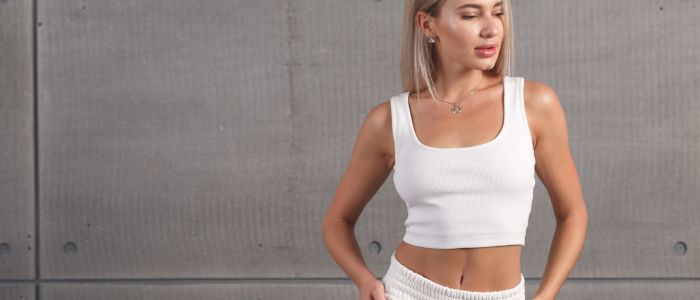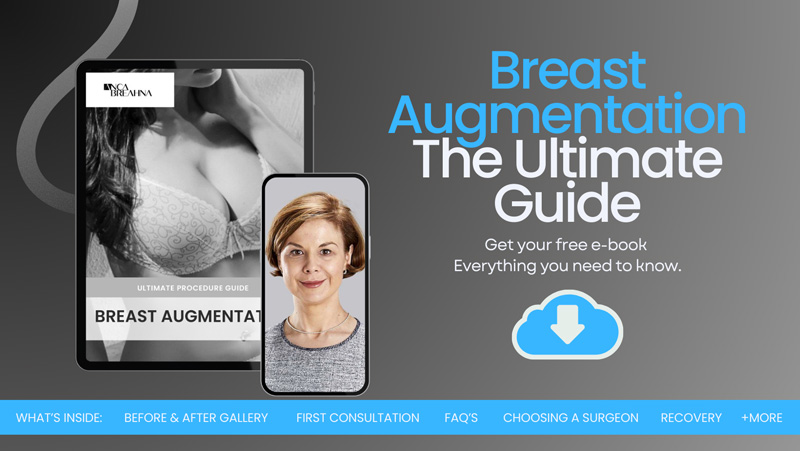
Do You Need Tuberous Breast Correction
Breasts come in all shapes and sizes, and pointy breasts and puffy nipples are examples of this natural variation. Pointy breasts, which have a more pronounced or conical shape, steer away from the often-promoted rounded breast contour. Puffy nipples, another variation, refer to nipples that project in a pronounced manner from the areola. They represent common variations in breast development.
You might have come across the term ‘tuberous breasts‘ in medical or lifestyle articles. This condition, often identifiable at puberty, is characterised by irregular breast development. This might include a more tubular shape, larger and puffier areolas, and unusual spacing between breasts. From a medical viewpoint, tuberous breasts may sometimes relate to underlying genetic factors, but they generally don’t pose health risks. Aesthetically, they differ from more widely advertised breast shapes, which can cause distress due to societal pressure.
Chester Consultant Plastic Surgeon Anca Breahna, PhD, MSc, FEBOPRAS, FRCS (Plast) is a distinguished Consultant Plastic Surgeon esteemed for her expertise, is available to guide you in making the right choice about the best breast procedure suited to your unique situation.
Download Miss Anca Breahna Breast Augmentation Guide

Breast Aesthetics
Next, we’re going to take apart some of the complex elements surrounding the aesthetics of breasts. It’s important to understand not just the biological aspects but also how societal influences have moulded perceptions over time.
Historical Context of Breast Aesthetics
If you look back through history, you’ll see that the ‘ideal’ breast shape has been a constantly moving target. Centuries ago, the desirable form in one culture was often vastly different from what was preferred in another. These ideals were influenced by various factors, from economic conditions to the reigning power’s cultural leanings.
One consistent aspect is that media and culture have always had a significant role in dictating these trends. From Renaissance paintings to modern magazine covers, the depictions of women’s bodies have often set the standard for what you might feel pressured to consider beautiful. This trend-setting power can create a narrow and sometimes unattainable beauty standard that doesn’t reflect the natural diversity of human bodies.
Breast Development
Moving on to biology, it’s clear that your genes have a substantial role to play in deciding the shape of your breasts. The development process is initiated during puberty, influenced by hormones that naturally occur in your body. The size, placement, and shape that your breasts eventually settle into are as unique to you as your fingerprints.
Now, regarding pointy breasts and puffy nipples, these are simply variations within the wide range of normal breast shapes. Some people develop rounder shapes; others have breasts that are more conical. Similarly, nipples can protrude, lie flat, or appear ‘puffy’.
What Are Tuberous Breasts?
Here’s where things get a bit more specific. Tuberous breasts are a more distinct variation from what’s often considered the ‘standard’ breast shape. Medically speaking, this condition is defined by several physical signs, including enlarged, puffy areolas, a higher breast fold, and a noticeable space between the breasts. While it’s primarily a cosmetic issue, some might find it interferes with breastfeeding.
Body Image and Self-Esteem
Your perception of your body, including your breasts, doesn’t exist in a vacuum. It’s often a reflection of the societal messages absorbed from the world around you. Several studies have shed light on how variations in breast size and shape can significantly influence how you perceive yourself. This isn’t about vanity but a serious psychological experience that can impact your life in profound ways.
Research shows that many people, especially women, often face dissatisfaction with their breasts. This feeling doesn’t necessarily stem from any practical inconvenience but rather from a comparison with the prevalent ‘ideal’ breast shape and size showcased in media and popular culture. Whether it’s wishing for a different size, contour, or symmetry, the common thread running through these concerns is the influence of external standards imposed on individuals.
But here’s a thought to consider: these standards are not only unrealistic for most but also ever-changing. If history has taught us anything, it’s that beauty standards evolve. What’s considered attractive today might not be the case in a few years.
Medical Interventions for Tuberous Breasts
Here are some aspects to consider if you’re exploring options to correct tuberous breasts:
When to Consider Medical Evaluation for Tuberous Breasts
One primary reason you might seek a medical evaluation is physical discomfort. Some individuals report issues that aren’t just about appearance but involve practical aspects of daily life. For instance, finding a comfortable bra might be challenging, leading to physical discomfort during regular activities or exercise.
Furthermore, while tuberous breasts don’t pose a health risk in themselves, they can sometimes be associated with difficulty breastfeeding. The breast tissue’s development might impact milk production or storage, posing challenges if you choose to nurse a child in the future.
In essence, if you face practical challenges, physical discomfort, or emotional distress related to tuberous breasts, reaching out for a medical evaluation could be a helpful step.
Procedures to Correct Tuberous Breasts
When it comes to altering the appearance of tuberous breasts, several surgical options might be presented to you. One common procedure is breast augmentation, which involves the use of implants to adjust the shape and size. Another option could be a breast uplift, which strives to change the position and firmness without necessarily altering the size.
For tuberous breasts, specifically, Anca might suggest tissue expansion techniques. This process can help in cases where the base of the breast is constricted. It involves making strategic incisions to release the tight tissue and possibly using implants or fat grafting to enhance shape and symmetry.
Every surgical procedure comes with its inherent risks, and cosmetic surgeries are no exception. Common complications can range from infection and scarring to more specific ones like implant rupture or capsular contracture, where the scar tissue around an implant becomes unusually hard.
An essential part of your decision-making process should be a frank discussion with Anca about these risks. It’s important to ask about complication rates and the typical recovery process. Ensure you’re clear on both the immediate and long-term risks associated with your specific procedure.
Setting Realistic Expectations
While plastic surgery can create significant changes, it’s important to keep in mind that every outcome is unique. The ‘after’ will depend on your ‘before,’ and there’s a limit to how much you can safely alter your body’s natural structure.
FAQ about Tuberous Breasts
What are the defining characteristics of tuberous breasts, and how do I know if I have them?
Tuberous breasts are a result of a developmental process during puberty where the breasts don’t follow typical growth patterns. Several signs indicate this condition:
- Breasts may appear elongated or tube-like, hence the term ‘tuberous’
- The base of the breast might be restricted, causing the breast to seem narrow
- Areolas may be enlarged and protrude forward due to the surrounding breast tissue’s constriction
If you notice these features in your breasts, you might have tuberous breasts. However, breast shapes and sizes can vary greatly, and only a medical professional can provide a definitive assessment. It’s recommended to consult with Anca if you have any concerns about your breast development.
Can tuberous breasts lead to complications or health issues?
- Generally, tuberous breasts don’t pose a health threat. They are a natural breast development variation and, on their own, don’t lead to breast cancer or other diseases. However, some individuals with tuberous breasts may find certain activities, like breastfeeding, challenging, as the breast’s structure may affect milk production or storage capacity. If you’re experiencing physical discomfort or functional issues, it’s wise to seek medical advice. Additionally, if the appearance of your breasts causes emotional distress, speaking with a mental health professional or a support group can be beneficial.
What types of cosmetic procedures are available for reshaping tuberous breasts, and what are the expected recovery times?
Several cosmetic procedures could be considered for reshaping tuberous breasts, depending on the individual’s desired outcome. These include:
- Breast augmentation (use of implants)
- Tissue expansion
- Breast uplift
- Fat grafting or a combination of these procedures
Recovery times vary based on the procedure and individual health factors. Generally, you might expect a recovery period ranging from a few weeks to a couple of months for the body to heal adequately and the final results to settle. Anca will provide detailed post-operative care instructions and an estimated recovery timeline during your consultation.
Are there non-surgical alternatives to cosmetic surgery for addressing concerns about tuberous breasts?
Yes, there are non-surgical approaches, though they might not provide as dramatic changes as surgery. Some individuals find comfort and enhanced aesthetics through:
- Specialised bras or padding that provide the desired shape and contour
- Mental health support, like counselling or therapy, to address any emotional distress related to body image
- Physical routines or posture exercises that improve overall body confidence
These alternatives won’t structurally change the breasts, but they can help improve self-perception and comfort, which are fundamentally important.
How do I choose the right surgeon for a cosmetic procedure related to tuberous breasts?
Selecting the right surgeon is a critical step. Here’s a guideline to help in your decision-making:
- Ensure the surgeon is board-certified and recognised by the national medical authorities. This certification assures you that they’ve met specific standards of education, training, and practice
- Look for plastic surgeons who have experience with breast surgeries, particularly addressing tuberous breasts. They should be able to provide before-and-after photos of their work
- Schedule consultations with potential surgeons to discuss your goals, ask questions about the procedure, recovery, and costs, and assess how comfortable you feel with them
- Seek reviews or testimonials from previous patients
Further Reading about Breast Procedures with Consultant Plastic Surgeon Anca Breahna
- Read more about Solutions for Saggy Breasts
- Read more about Solutions for Uneven Breasts
- Read more about Breast Uplift – Mastopexy
- Read more about Breast Implant Removal and Uplift
- Read more about What are Tuberous Breasts and How to Correct Them
- Read more about Excess Skin after Weight Loss – Causes and Solutions
- Read more about Causes and Treatments for Tuberous Breasts
Medical References about Pointy Breasts
- Tubular Breasts: Symptoms, Causes, And Augmentation – Medical News Today
- Review of Tuberous Breast Deformity – NCBI
- Tuberous Breast Deformity: A Modified Technique for Single-Stage Correction – NCBI
- Surgical Treatment of Tubular Breast Type II – NCBI
- What To Know About Breast Shapes – Medical News Today


 Ms Anca Breahna, PhD, MSc, FEBOPRAS, FRCS (Plast) is a highly regarded Consultant Plastic Surgeon specialising in the field of Aesthetic and Reconstructive Plastic Surgery. Anca performs a range of
Ms Anca Breahna, PhD, MSc, FEBOPRAS, FRCS (Plast) is a highly regarded Consultant Plastic Surgeon specialising in the field of Aesthetic and Reconstructive Plastic Surgery. Anca performs a range of 